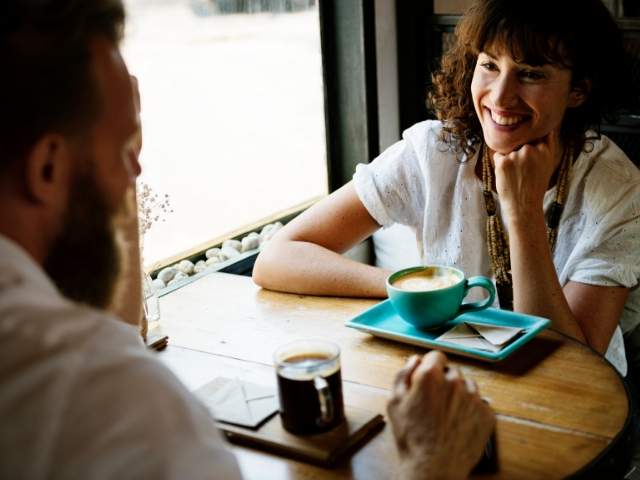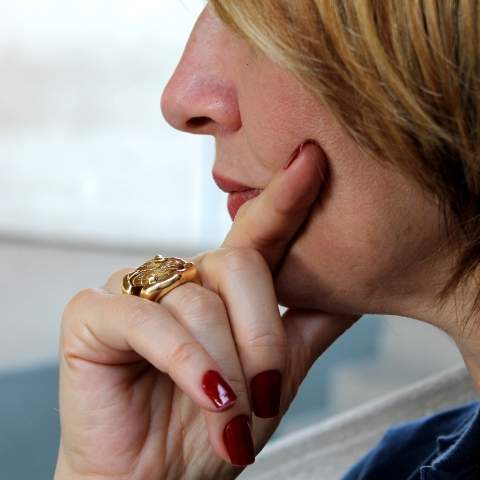
ANDIn the following article you will learn different techniques to know how to read people
So says the phrase, “Actions say louder than words”.
We can think very well what we are going to say, plan it and communicate it to create an image of ourselves in the minds of other people.
But as you well know, those words may not be true. That is, words can project the wrong image. Why? Because we can lie.
However, our body expresses itself unconsciously. It is more complex and unlikely that a person plans his movements with a definite purpose.
Here are the advantages of knowing how to read people and understand their body language.
Our words may lie, but our bodily expressions give us away.
Despite having different personalities and having lived different experiences, we all feel fear, joy, sadness, anxiety or euphoria. And our body expresses them when our cheeks blush, when our hands sweat, if our gaze wanders, when our voices tremble or if we cross our arms.
Each of these expressions has a meaning and you can learn to interpret them!
How communication works.
Albert Mehrabian, UCLA professor of psychology, known for his studies related to the importance of verbal and nonverbal communication; states that human communication is divided into the following percentages:
- 55% is our body language.
- 38% comes from the tone of the voice.
- 7% are our words.
Although these results respond to certain circumstances and are not absolute answers to all situations; It is clear that more than half of the signals emitted by a human being when it comes to communication come from his bodily expressions.
Likewise, Alan Pease, body language expert and co-author of more than 15 related books, including “The language of the body: How to interpret others through their gestures”; He affirms that mimicry, gestures and other body movements can unmask a person and show what he really thinks and feels.
How to read people?
Reading people mainly requires much observation.
It’s about seeing subtle clues in body language, facial expressions, or eye movement.
LaRae Quy, a former FBI agent, says you don’t need to be the best interrogator to figure out what’s on someone’s mind. The signs are always there, we just have to observe and know what we are looking for.
LaRae clarifies that each individual has patterns of behavior that we must identify to establish a basis for analysis.
For example, there are people who scratch their heads or frown, there are others who constantly move their leg or look at the floor while they speak.
Also read: How to project more leadership with these 6 positions.
Although these movements could be simple mannerisms, they could also signify nervousness, anxiety, or anger.
The important thing is that you activate your capacity for observation and begin to identify these forms of expression.
Focus your attention on these three points:
-
Watch the movement of the eyes.
A person’s eyes are a great source of information. If you look someone in the eye, you could tell if they are under the influence of alcohol or marijuana.
If his eyes are too closed you could tell that he is tired. Or if they are very open, you might sense that the person is scared or surprised.
You could also tell if a person is distracted if their eyes look away, or if their eyes dart quickly, it could mean they are trying to make a decision.
The next time you have a conversation, take a close look at the eyes. You might be surprised at how much a simple eye movement can tell you.
This is very subtle, compared to body language analysis; but it can be an excellent source of information with a little practice.
-
Observe the movement of the body.
The way we stand, position our body, and move our hands; says much more than we think.
- Someone sitting with their arms folded may feel uncomfortable with their location or the situation.
- A person who is moving their leg under the table may be nervous.
- Someone who keeps their shoulders hunched may not feel self-assured.
Also read: How to know if someone is lying; 8 signs that give them away.
Pay close attention to the way a person positions themselves. This form of nonverbal communication is often non-voluntary and can help you read someone before engaging in conversation.
Keep in mind that body language also depends on the context. A person with arms crossed can be warned; but if the room is cold, she might just be trying to stay warm.
A person with hunched shoulders may feel suspicious, but if they’re standing in the rain, they might be trying to cover themselves.
-
Look at the facial expressions:
Someone’s face can tell you a lot about how they feel or what they think.
Do not look for prolonged facial expressions: For example, the smile or the frown.
Instead, focus on micro-expressions: those that occur in a fraction of a second, due to something being said or done.
We all make the same kinds of micro-expressions, regardless of where we grew up or what experiences we’ve had.
One study found that even people who are congenitally blind (who have been blind since birth) make the same expressions.
This means that they have nothing to imitate their own expressions; since they never had the possibility to see someone to copy them.
Only by looking at a person’s face can you identify expressions such as anger, surprise, fear, happiness or sadness.
Identifying these expressions can help you lead a conversation, to know if something you say is taken in a bad way or if the person you are talking to disagrees with you; even if you have said you agree.
Remember to carefully observe body movements, eye movements, and facial expressions.
Next we will see other tricks to learn how to read people, and the meaning of some very common gestures.
But first, we would like to ask you a favor. Simply vote from 1 to 5 to see how you’ve found this article so far. Thank you very much!
Let’s continue…
Other tricks to know how to read people.
As mentioned above, body language does not only depend on the true intentions of the individual; but also external factors or personality, which must be taken into account to make a good reading.
Jeff Thompson, a New York University professor specializing in police crises and hostage negotiations in terrorist conflicts; He has focused his research on the impact of non-verbal communication in conflict situations.
Thompson affirms that one way to be more accurate when reading a person is to apply the 3 C’s of non-verbal language. Which are?
Context: It is the environment in which the situation takes place, the story between the people involved and their roles.
Clusters: It is the group of meanings that a movement can have. This prevents us from determining the person’s state by a single gesture and from determining the person’s thoughts and emotions.
Crossing your arms can be a sign of resistance. However, it can also be a reaction to a cold room. Clusters help us look at various possibilities.
No gesture or word, by itself, necessarily means something. But when several behaviors are grouped together, they already have meaning.
Congruence: A good reading requires making comparisons between movements, gestures and obviously the words. So you should check if the person’s movements are congruent with their words.
Some gestures and their meaning
Find out below some of the most common gestures and movements and what their meanings may be.
Put something in your mouth and bite it.
During meetings or conversations some people take a pencil, pen or pen and put it in their mouth. People with glasses also take them off and put them in their mouths. Why?
It is very possible that they are worried on a subconscious level and put things in their mouths to simulate when their mother breastfed them. This with the intention of seeking security.
A cigarette or chewing gum can mean the same thing.

Touch the jaw
This gesture commonly means that the person is making a decision. If you think about it, it is common for this gesture to be accompanied by a misplaced look; since they are thinking deeply.



Handshake with both hands.
A strong handshake using both limbs is a sign of trust. It means that the person feels or felt comfortable with your presence or is happy to see you.



Lean forward or backward when sitting.
If you are talking to a person and they lean forward, it means they want to make more contact with you.
If a woman or a man starts to lean their torso forward, they will start to move into your space. This means that she has some sympathy for you. It is possible that she likes you.
On the contrary, leaning back is a sign of tiredness or boredom towards the conversation. That person may not feel comfortable with your presence.



Bring your hands to your mouth.
This is a sign that there is something the person does not want to say.
As children, if we said something wrong, we would immediately put our hands over our mouths as a sign that we didn’t mean it, but it came out.
As adults this gesture is not so obvious, but bringing a couple of fingers or a fist to your mouth means that there is something you prefer to keep quiet about. Sometimes this gesture is replaced by a feigned cough.



Conclusion.
LaRae says it takes time to learn how to read people accurately. And of course, there are exceptions to every rule.
But if you keep these principles in mind as you develop your powers of observation, your ability to read others, understand their thoughts, and communicate effectively will greatly improve.
I hope this information will be of great help to you 🙂
And remember that if you are really interested in creating your own business, you can purchase our book “How to create a company while working: Discover how to manage your time, manage your money and motivate yourself while creating a company and working for another” , where you will find all the information you need to found your own company, without having to leave your job.



